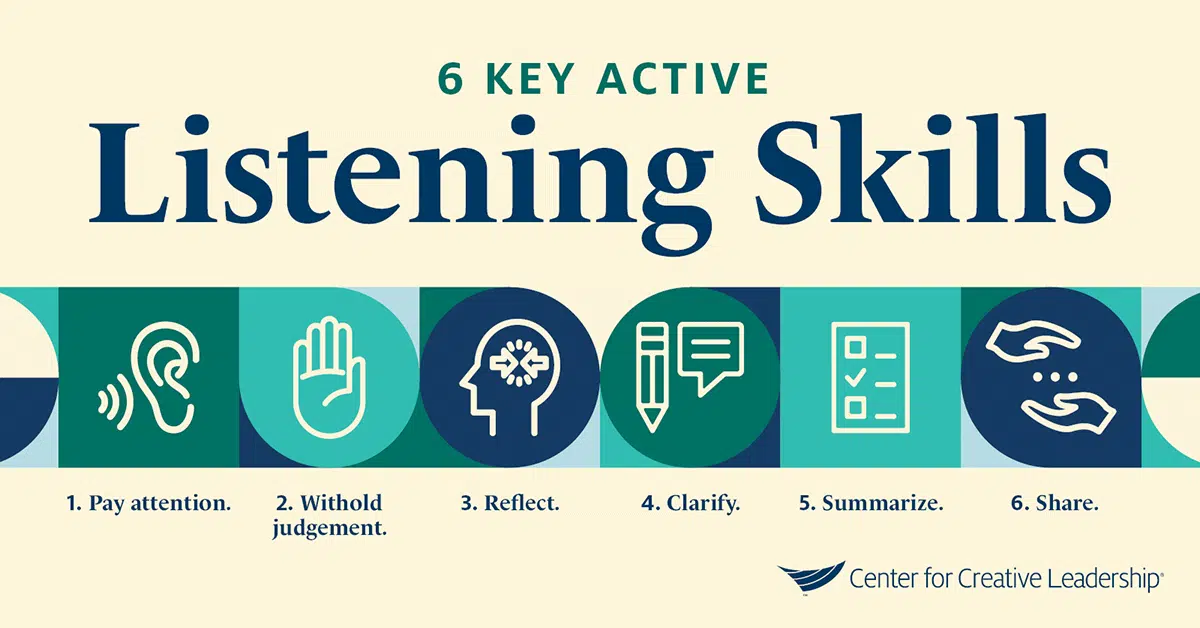How can I improve my active listening skills in a therapy or counseling setting?


Active listening is a crucial skill in therapy and counseling settings. It involves fully engaging with the client, understanding their perspective, and providing empathetic support. By improving your active listening skills, you can enhance the therapeutic relationship, promote effective communication, and ultimately improve the client’s mental health outcomes. In this article, we will explore various strategies and techniques to help you improve your active listening skills in a therapy or counseling setting.
Understanding Active Listening
Active listening is more than just hearing what the client is saying. It involves being fully present, paying attention to both verbal and nonverbal cues, and responding in a way that shows understanding and empathy. Here are some key elements of active listening:
1. Paying attention: Give your full attention to the client, maintaining eye contact, and avoiding distractions. This shows that you value their words and are fully present in the conversation.
2. Nonverbal cues: Pay attention to the client’s body language, facial expressions, and tone of voice. These nonverbal cues can provide valuable insights into their emotions and help you understand their experience on a deeper level.
3. Empathy: Show empathy by putting yourself in the client’s shoes and trying to understand their perspective. This involves suspending judgment and truly listening to their thoughts and feelings without imposing your own biases.
Techniques to Improve Active Listening
Now that we have a better understanding of active listening, let’s explore some techniques that can help you improve your active listening skills in a therapy or counseling setting:
1. Paraphrasing: Paraphrasing involves restating the client’s words in your own words to ensure understanding. This technique not only shows that you are actively listening but also allows the client to clarify or expand on their thoughts.
2. Reflection: Reflecting involves summarizing the client’s feelings or emotions to demonstrate that you understand their experience. For example, you might say, “It sounds like you’re feeling frustrated because…”
3. Open-ended questions: Use open-ended questions to encourage the client to share more information and explore their thoughts and feelings. These questions cannot be answered with a simple “yes” or “no” and promote deeper reflection and conversation.
4. Minimal encouragers: Use minimal encouragers such as nodding, saying “mm-hmm,” or using brief verbal cues to show that you are actively listening and engaged in the conversation. These cues can help the client feel heard and understood.
5. Reflective listening: Reflective listening involves summarizing the client’s main points and feelings to ensure accurate understanding. This technique can help the client feel validated and encourages further exploration of their thoughts and emotions.
Providing Feedback
In addition to actively listening, providing feedback is an essential part of the therapeutic process. Feedback helps the client gain insight into their thoughts and behaviors and promotes growth and change. Here are some tips for providing effective feedback:
1. Be specific: Provide specific examples or observations to support your feedback. This helps the client understand the context and relevance of your observations.
2. Use “I” statements: Frame your feedback using “I” statements to avoid sounding judgmental or accusatory. For example, say, “I noticed that when you talked about your family, you seemed to become more withdrawn” instead of “You always shut down when talking about your family.”
3. Balance positive and constructive feedback: While it’s important to address areas for growth, also highlight the client’s strengths and progress. This helps build their self-esteem and motivation for change.
4. Check for understanding: After providing feedback, check with the client to ensure they understood your observations and interpretations correctly. This allows for clarification and further exploration if needed.
Conclusion
Improving your active listening skills in a therapy or counseling setting is crucial for building a strong therapeutic relationship and promoting effective communication. By paying attention, using nonverbal cues, showing empathy, and utilizing techniques such as paraphrasing and reflection, you can enhance your active listening skills. Additionally, providing feedback that is specific, balanced, and framed using “I” statements can further support the therapeutic process. By continuously honing your active listening skills, you can create a safe and supportive environment for clients, leading to improved mental health outcomes.
Recent Posts
How do I create an engaging and informative online quiz or assessment?
Creating an engaging and informative online quiz or assessment can be a powerful tool for… Read More
What are the most effective methods for managing and reducing work-related stress in the hospitality industry?
Work-related stress is a common issue in the hospitality industry, where employees often face long… Read More
How can I improve my assertiveness and communication skills in a leadership position?
In a leadership position, assertiveness and effective communication skills are crucial for success. Being able… Read More
What are the key elements of a successful employee recognition and rewards program?
Employee recognition and rewards programs play a crucial role in motivating and engaging employees, as… Read More
How do I effectively manage and respond to customer feedback and reviews?
Customer feedback and online reviews play a crucial role in shaping a company's reputation and… Read More
What are the best strategies for effective time management as a stay-at-home parent?
Effective time management is crucial for stay-at-home parents who juggle multiple responsibilities on a daily… Read More